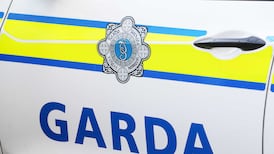Descriptions of failed attempts to save people from the 1981 Stardust fire, in which 48 young people died, described as “very distressing”, were heard at inquests into the deaths on Wednesday.
Testimony from Stardust doorman, Patrick J Murphy, now dead, was read into the record at Dublin coroner’s court. It is hearing fresh inquests into the deaths of the 48 people who died in the north Dublin venue in the early hours of 14th February 1981, at the Pillar Room on the campus of the Rotunda hospital. This follows a 2019 recommendation by then attorney general Séamus Woulfe that they be opened.
Mr Murphy told gardaí in 1981 he had been approached by a woman in her 20s at about 1.45am who said: ‘They’ve started a fire in the corner’, pointing to a partitioned area known as the west alcove. He pulled back a blind and saw the “top of a back of a seat was on fire”.
“The fire looked very small at this time.” He returned with a fire-extinguisher seconds later and the fire was “all along the tops of the seats at the back wall”.
READ MORE
“I attempted to put the fire out with the extinguisher but it did not seem to make any difference.” Two colleagues arrived with extinguishers and tried to get the fire under control. “We failed,” said Mr Murphy.
“At this stage there was intense heat from the ceiling, which started to melt and parts of it dropped on tables and seats, starting more fires. I moved back because of the heat ... The ceiling then collapsed filling this area with fumes and black smoke.
“I was overcome by fumes and smoke and made my way to the door leading to kitchen and the [adjoining restaurant/bar, which was clear of smoke].” He got sick and left though the exit there.
At one exit outside he found people lifting a man out who “appeared to be badly burnt”. He looked in and “was amazed to see the fire had spread so rapidly across the ballroom. The place was engulfed in flames and I could see a couple of feet into the building.
“As I looked in I saw a young girl run towards the door through the flames and she fell about four feet inside the door. This person was completely on fire. When she fell, I and two others ... got down on our bellies, crawled in and pulled her out. When we got her out she appeared to be dead.
“I saw another girl run towards the door but she fell further inside and was burned. I could not get in because the flames were blowing off the wall and coming from the roof and the heat was intense.
“I then went from one exit to another on the east side trying to assist people out of the club and to keep others who were trying to get back into look for friends, out,” said Mr Murphy.
Coroner, Dr Myra Cullinane, at the end of Wednesday’s hearings, said she was “aware” that “certain content” had been “very distressing for families present and watching remotely ... Sadly it will be a factor in these inquests that there will be distressing content at times,” she said.
The inquests heard testimony from two witnesses suggesting fire was present in the roof-space of the Stardust before people were aware of it inside.
Maeve Naughton, a waitress on the night, said while she first smelt smoke shortly after 1.40am and was aware of fire after 1.50am, her brother, who lived in the nearby Beauvale area, could see flames through the roof closer to 1am, she said.
Dr Cullinane asked her: “You say you had a conversation with your brother who lives in Beauvale afterwards. How far away is Beauvale from the Stardust, roughly”
“It’s about from here to say, less than Clerys [about 500 metres]. He saw the flames at 1 o’clock. He still says that. He saw the roof on fire at 1 o’clock.”
Mr Murphy, in his testimony, said he could feel “intense heat” from the ceiling as he attempted to extinguish the fire. “ As the drops fell I could see them burn on the spot where they fell. I knew at this time the intense heat in the area could not be caused by the small [fire]..The intense heat came from the ceiling but I could not see a fire there,” he said in 1981.














